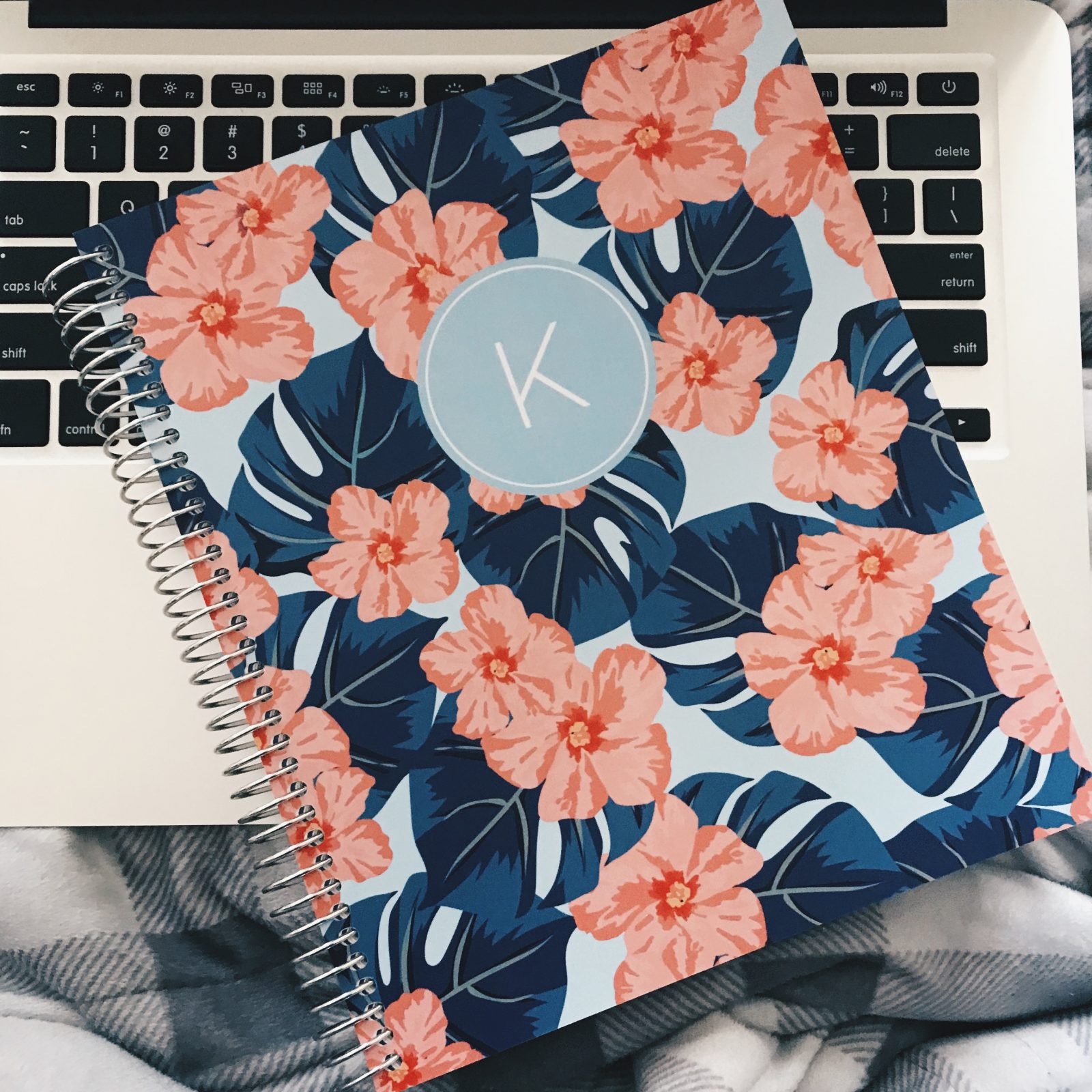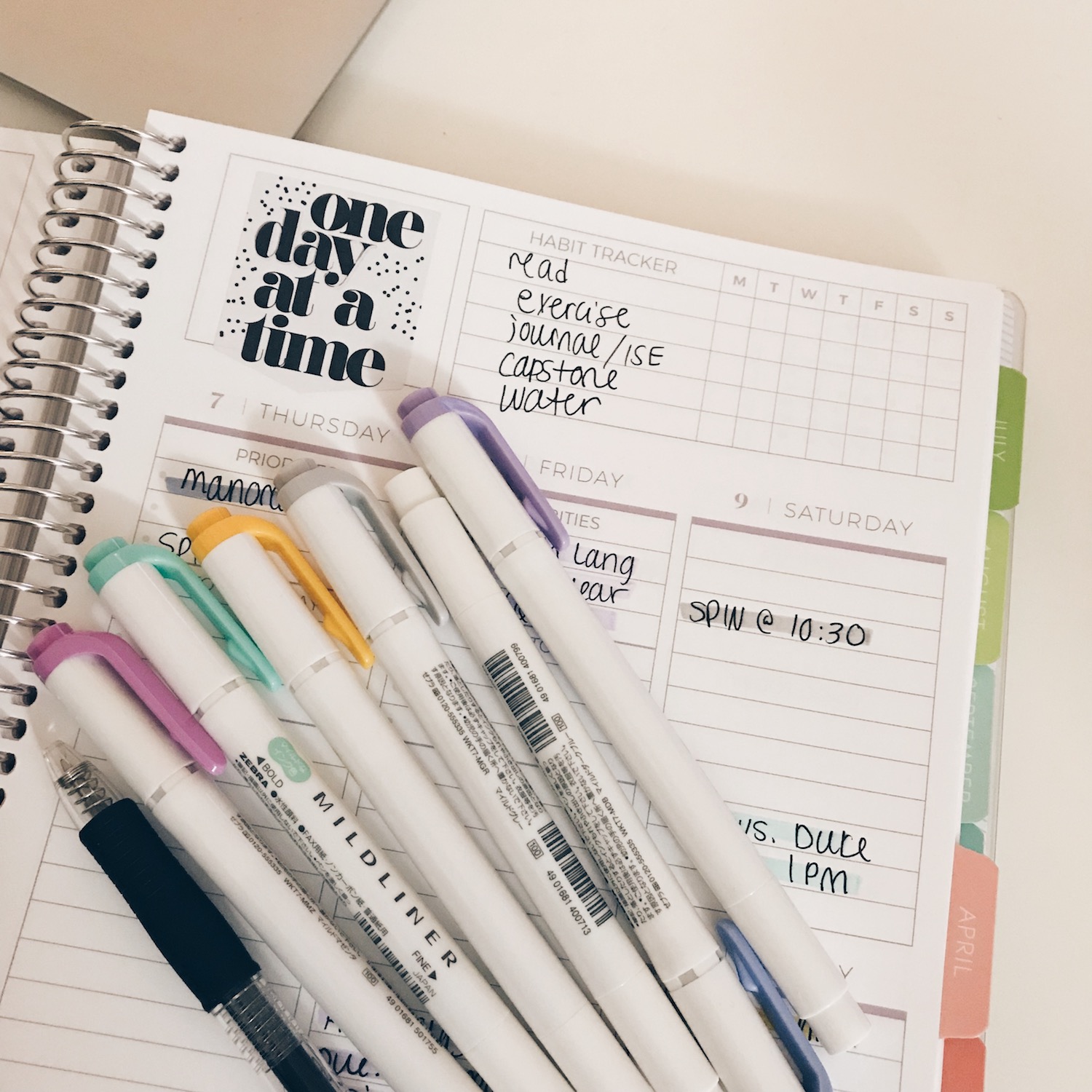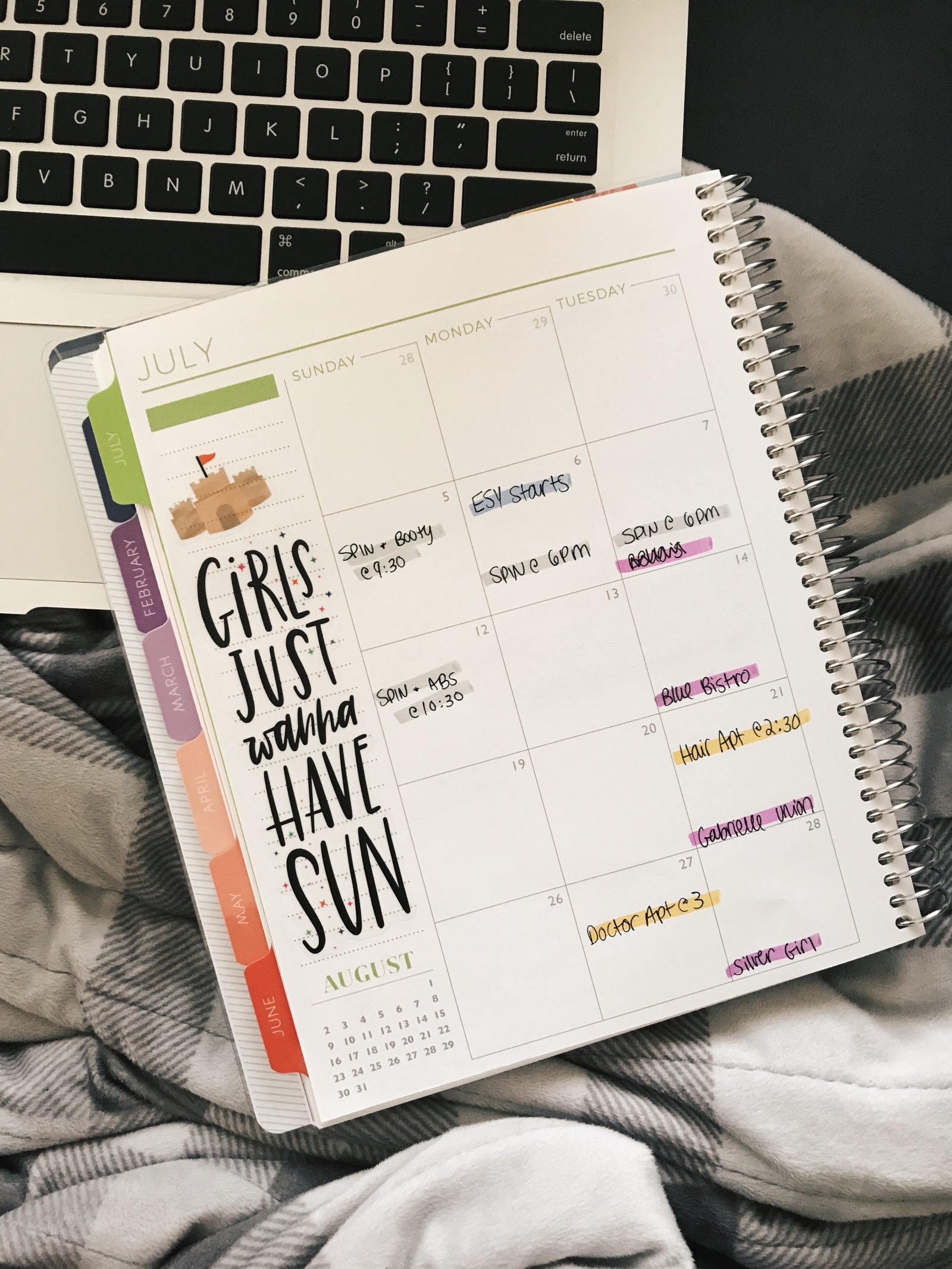As planner szn is upon us (2020 planner post coming soon!) I wanted to talk about planners and how I use mine and make sure I’m consistent/getting my money’s worth! Sometimes it’s really hard to stick with using a planner, especially if you aren’t a self-proclaimed “planner person”. Not everyone loves writing things down or wants to make their planner super fancy! And that’s okay.
My number one piece of advice when it comes to planners is: YOU DO YOU. There are a lot of different planning systems and styles out there and there’s definitely not a one size fits all approach to doing things. However, you might be feeling stuck with using your planner or you just got a super nice one (or you’re wanting a nice one) and you aren’t sure how to make sure you’ll use it. I’m here to help!
Tip #1: find the best planner for you.
Research planner styles/layouts and figure out what makes the most sense to you! I’ve always been a vertical planner person, that’s something I just know about myself. So most of the time I’ll gravitate toward planners that have that kind of layout. If you aren’t sure what you like, grab a blank piece of paper and experiment! Write down different tasks or things you know you’ll want to keep in your planner and see which layout fits with that. You can also usually find free printables online to test out different planning styles!
Some things to think about:
- Physical size of the planner (do you need something portable or will it sit on your desk all day?)
- Its durability (are you going to be stuffing it in your bag a lot? do you want something without a coil?)
- Do you need hourly lines? Open, unlined space? Vertical or horizontal?
- Do you care about month at a glance or will you primarily use weekly views?
- Page thickness (depending on what kind of pens/markers are your favorite)
- Notes pages? Do you want them/need them? Can they be repurposed for something else that fits your needs?
You don’t need to buy an expensive planner to be productive. You don’t need to buy a planner just because it’s the popular option, either – just because that brand is popular doesn’t mean it’s going to work for you.
Tip #2: set it up in a way that makes sense to you.
Once you get your planner, definitely set it up in a way that makes sense to you. If you are one of those people who likes to get inspo from other planner people, that’s fine! Encouraged, even! But make sure whatever method you’re using to organize yourself makes sense to you.
Some examples of things to do when you set your planner up:
- Figure out what you want to track in the monthly view
- Fill out what you want to track in the weekly view
- Add important dates like birthdays, anniversaries, vacations, days off, etc.
- Goals and to-do’s for the month
- Appointments and meetings
- Reminders
- Daily tasks and to-do’s (these can be household chores such as grocery shopping, cleaning, or athletic events and activities, work, or school related)
Tip #3: have a system that’s quick easy to use.
For a short while, I was using lots of stickers, highlighters, and washi tape to plan. That can be fun and nice for a little while, but I quickly realized it was not sustainable. Now, I keep it simple with a black pen and highlighters that can be used later on. I color code based on the category of the item: work, personal, fitness, and appointments!
Some examples of systems/styles you can try:
- Color-code. Figure out the most common categories you write in your planner and then assign colors by what makes the most sense to you!
- You can add stickers, different fonts, highlight, add pictures, or drawings to emphasize certain things
- Utilize every section of your planner in any way that you need and will work best for you!
- Have regular (daily or weekly) planning sessions where you can write down your to-do lists, tasks, and/or goals for the day or week
- Use a single planner for everything! Don’t try to bounce between multiple planners for school, work, etc. I’ve tried this before and things ended up slipping through the cracks! Unless you 1000% know you can juggle multiple planners, don’t do it.
- Have a routine for checking your planner and scheduling your planning sessions. I keep my planner next to me at my desk and refer back to it multiple times a day. I love to take Sundays to plan out my week ahead. I call it #SundayPlanning.
Tip #4: keep it visible and write everything down.
This is easy for me because I live and die by my planner, but it might take some getting used to! Write EVERYTHING down. Even if you think it might be insignificant! I try to write more than I need down because ya never know. When I’m at work my mind is usually all over the place. Having my planner be a spot of sanity and a starting point to get things done is so helpful.
Some thoughts/ways to put this into practice:
- Refer to your planner once in the morning and once at night, at LEAST. If you bring it to work, leave your planner open in front of you, so it’s easy to refer to and add things as needed.
- Make your planner essential to you — as essential as your phone, keys, wallet, and mask (lol) — that will ensure that you use it regularly and begin to trust it as a system.
- Maybe you’ve already listed your grand tasks for the month, but writing a to-do list every day is just as important as long-term planning. A daily to-do list will help you accomplish smaller tasks, which will lead you closer to those big tasks. At the end of each work day, be sure to add any tasks that came up during the day and review what needs to be done tomorrow
- Rewrite any unfinished tasks every day. When you rewrite (moving anything that’s unfinished from week to week/month to month) it reminds you what you’re putting off. Then you can ask yourself: do I actually need to do this? Do I want to do this? If you’ve been putting it off, it may be because you need to break the thing down into more manageable chunks/tasks.
- Each to-do should begin with a VERB. Make sure each of your tasks are actionable. This is a psychological trick you can use on yourself to make it easier to get your tasks completed. Instead of saying “Sarah’s IEP goals” put “Write Sarah’s IEP goals”.
- Remember this: no task is too small to be written down. Even if you think you’ll remember something, write it down anyway. It’s always better to be safe than sorry! The act of writing down your tasks has psychological benefits that can help you be more productive.
Tip #5: make time to reflect and express gratitude.
I’m trying to get better at this so I included it! Reflection gives us the opportunity to reflect on how things have gone and to consider how to make positive changes in your life. It encourages you to be purposeful with how you spend your time, brings clarity to your priorities, and helps you celebrate your successes while actively learning and growing from your mistakes. Try dedicating a few minutes each week and month – and ideally a little longer at the beginning, middle, and end of the year to reflect. In my 2021 planner (yes, I’ve already ordered it lol) I made sure there was a section for monthly reflection!
Something else I’m trying to do is write down a daily gratitude. Expressing gratitude is a simple but powerful way to positively impact your mental health. Record one thing or event that has filled you with gratitude and joy each day on the last line of your planner. Expressing gratitude allows you to search for small things throughout your day and it can give you something to look back over and read whenever you are feeling down!
Thanks for reading and hopefully this post helped you! Leave a comment below if you currently do any of these things or if you’re hoping to start! Side note: the planner pictured throughout this post is the Vertical Priorities planner from Plum Paper! If you’re interested in a discount code let me know I have one for 10% off your first purchase.




